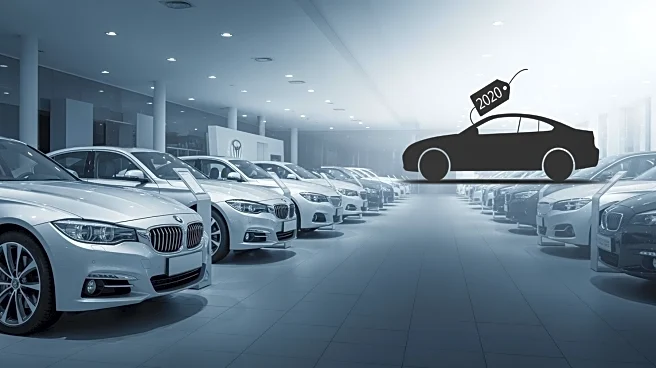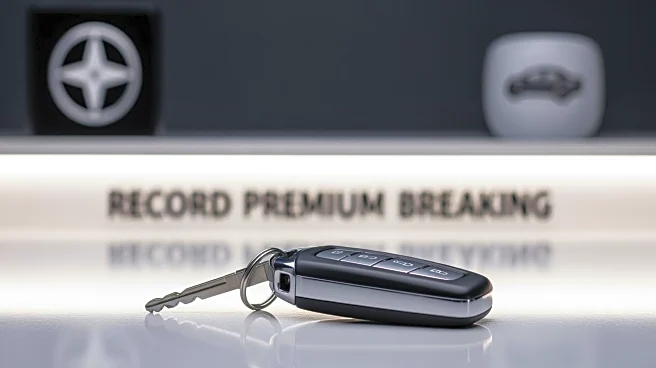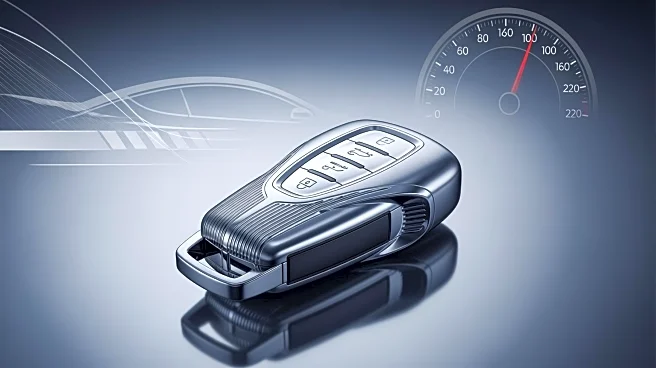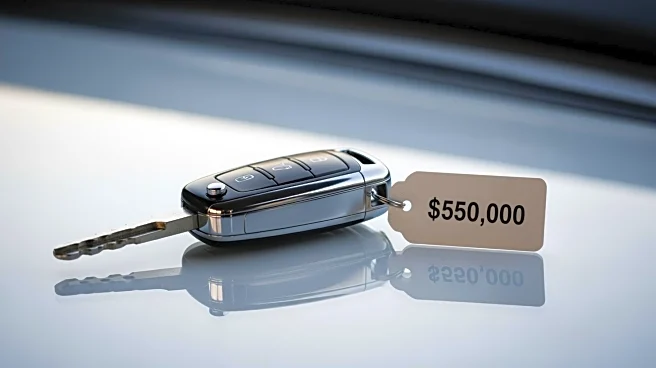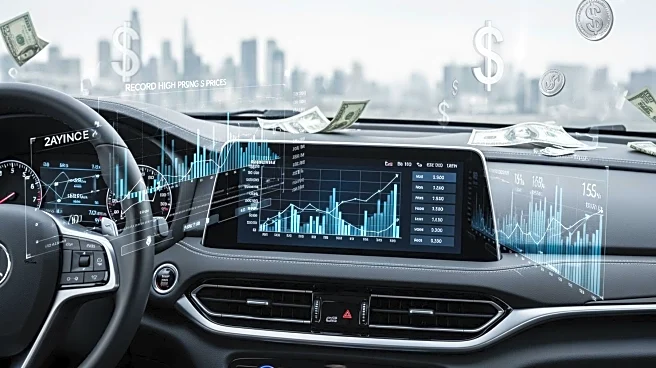What's Happening?
The cost of new cars in the United States has reached a record high of $50,000, according to experts. This surge in prices has resulted in a minimal difference between the cost of new and used vehicles, impacting consumer purchasing decisions. The trend
is attributed to various factors, including supply chain disruptions, increased demand, and inflationary pressures affecting the automotive industry.
Why It's Important?
The rising cost of new cars has significant implications for consumers and the automotive market. As the price gap between new and used cars narrows, consumers may face challenges in finding affordable vehicle options. This situation could lead to shifts in consumer behavior, with more individuals opting for used cars or delaying purchases. The automotive industry may need to adapt to changing demand patterns and explore strategies to manage pricing and inventory effectively.
What's Next?
Automakers and dealerships may need to implement strategies to address the affordability issue, such as offering incentives or financing options to attract buyers. Additionally, industry stakeholders might focus on improving supply chain resilience to mitigate price increases. Policymakers could also consider measures to support consumers facing financial challenges due to rising vehicle costs.
Beyond the Headlines
The trend of rising car prices also highlights broader economic issues, such as inflation and supply chain vulnerabilities. As these factors continue to impact various industries, there may be increased pressure on policymakers to address underlying economic challenges. The automotive sector's response to these issues could influence broader economic trends and consumer confidence.
